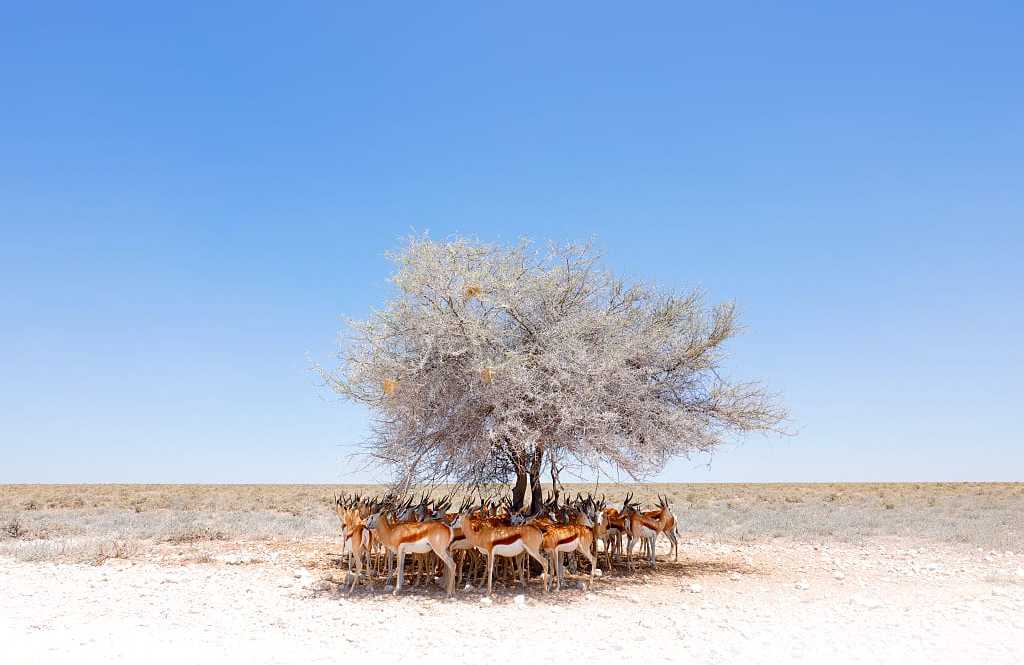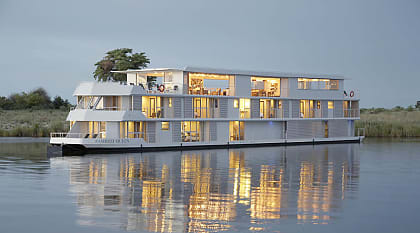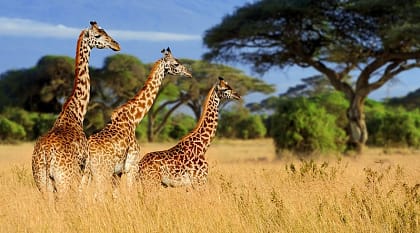Savannas dominate the African safari, with carpets of grass punctuated by trees and shrubs not profuse enough to form a canopy. They provide a haven for many, creating a broad mix of vegetation that supports an abundance of species. Grassland is dotted with trees or shrubs, with some bunching together to blossom beside a waterway or along an unseen slope that feeds on mountain rains. Savannas are idyllic destinations for walking, horse riding, or bicycle safaris, enabling you to explore the mix of woodland and grassland for a menagerie of surprises.
What to Expect
- Vast, open grasslands offer panoramic views and excellent visibility for spotting wildlife from a distance.
- The classic safari image of acacia-dotted plains, especially during the dramatic sunrises and sunsets.
- Large herds of grazing animals, such as wildebeest, zebra, and buffalo, thrive in this environment.
- Thrilling predator encounters as lions, cheetahs, and hyenas take advantage of the open terrain for hunting.
- A sense of immense space and freedom, whether on a game drive or a hot-air balloon safari over the plains.
Fauna and Flora
- Fauna: Lion, cheetah, elephant, giraffe, zebra, wildebeest, African buffalo
- Flora: Acacia tree, baobab tree, red oat grass, Bermuda grass
Best Places with Savannas
- South Africa
- Tanzania
- Kenya
Witness the quintessential savanna landscape and its famous inhabitants on a Maasai Mara Great Migration Safari.










